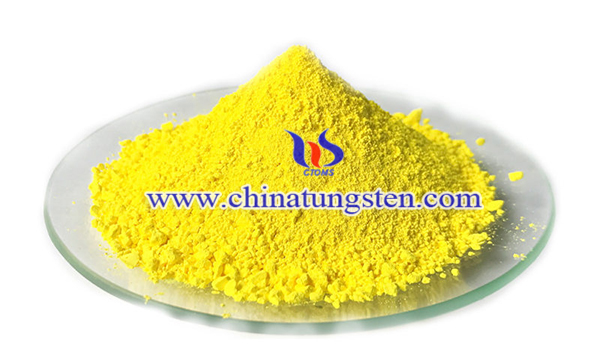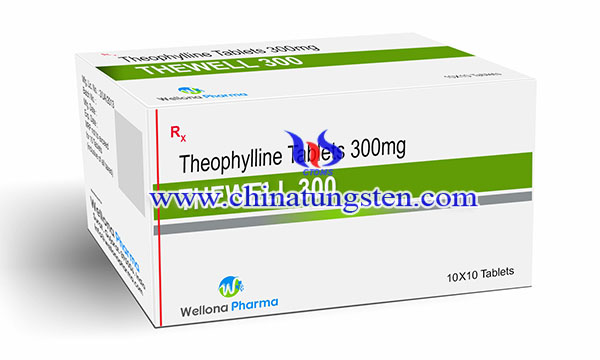WO3/MWCNT for Trace Determination of Theophylline
- Details
- Category: Tungsten Information
- Published on Monday, 11 October 2021 01:37
Theophylline (THP) is used to treat patients with reversible airway obstruction (asthma and chronic obstructive pulmonary). It relaxes smooth muscles, opens the airways of the lungs, and makes breathing easier. Therefore, it is of great significance to develop an accurate, simple and fast method to measure theophylline in different media.
Therefore, researchers have introduced WO3/MWCNT for the trace determination of theophylline. WO3/MWCNT is constructed by the modification of glassy carbon electrode (GCE) with the nano-composite of tungsten trioxide (WO3) nanoparticles and multiwall carbon nanotubes (MWCNT). The modified GCE exhibit excellent response characteristics to theophylline and was used to determine theophylline in pharmaceutical and biological media. The synthesis process of WO3/MWCNT sensor is as below:

A chemical precipitation method is used to prepare tungsten trioxide nanoparticles in an acidic medium. A certain amount of tungstate was dissolved in double distilled water and the resulting solution was heated to 80°C. While stirring the solution vigorously, slowly add a warm and relatively concentrated nitric acid solution at a rate of about 0.5 mL/min. The final concentrations of tungstate and nitric acid in the solution were adjusted to 10mM and 4.0M, respectively. While stirring the solution, the resulting mixture was kept at 80°C for 60 minutes. The precipitate was then allowed to cool and stand at room temperature for 1 day. In order to wash the precipitate, a large amount of distilled water was added and stirred for 10 minutes, and then the precipitate was allowed to settle at night. This washing program is performed tree times. Finally, the precipitate was separated by decantation and dried at 100°C. The dried precipitate is used to prepare electrochemical sensors.
MWCNT was functionalized with a 3:1 solution of sulfuric acid and nitric acid at room temperature for 5 hours under stirring. Then, the suspension was separated by centrifugation, and the solid residue was washed with distilled water several times until the washing water was neutralized, and finally the solid was dried. 5.0 mg of functionalized MWCNT and 3.0 mg of WO3 nanoparticles were added to 2 mL of distilled water, and the mixture was sonicated for 20 minutes until a relatively stable suspension was obtained.

Before surface modification, GCE was polished with 0.3 and 0.05μm alumina on the polishing cloth, and ultrasonically cleaned with H2SO4–H2O (50% v/v) for 10 minutes, and finally rinsed with distilled water and ethanol. Drop 4 μL of the above suspension directly onto a clean GCE surface and let it dry at ambient temperature. The constructed electrode (WO3/MWCNT/GCE) was used for subsequent analysis.
The sensor represented great selectivity for THP toward a wide diversity of foreign organic and inorganic chemicals. The modified sensor was used successfully for the measurement of theophylline in pharmaceutical and biological media.
- Tungsten Oxide Manufacturer & Supplier, Chinatungsten Online: www.tungsten-oxide.com
- Tungsten News & Prices of China Tungsten Industry Association: www.ctia.com.cn
- Molybdenum News & Price: news.molybdenum.com.cn
- Tel.: 86 592 5129696; Fax: 86 592 5129797; Email: sales@chinatungsten.com
Therefore, the sensor represented great selectivity for THP toward a wide diversity of foreign organic and inorganic chemicals. The modified sensor was used successfully for the measurement of theophylline in pharmaceutical and biological media.



 sales@chinatungsten.com
sales@chinatungsten.com